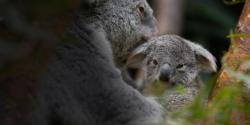Named for their wide, frog-like mouths, these birds are often mistaken for owls.
The species is actually part of the nightjar family and is active between dusk and dawn.
Scientific Name: Podargus strigoides
Conservation Status: Least Concern
Size: 9 to 12 inches
Weight: .88 to 1.3 pounds









